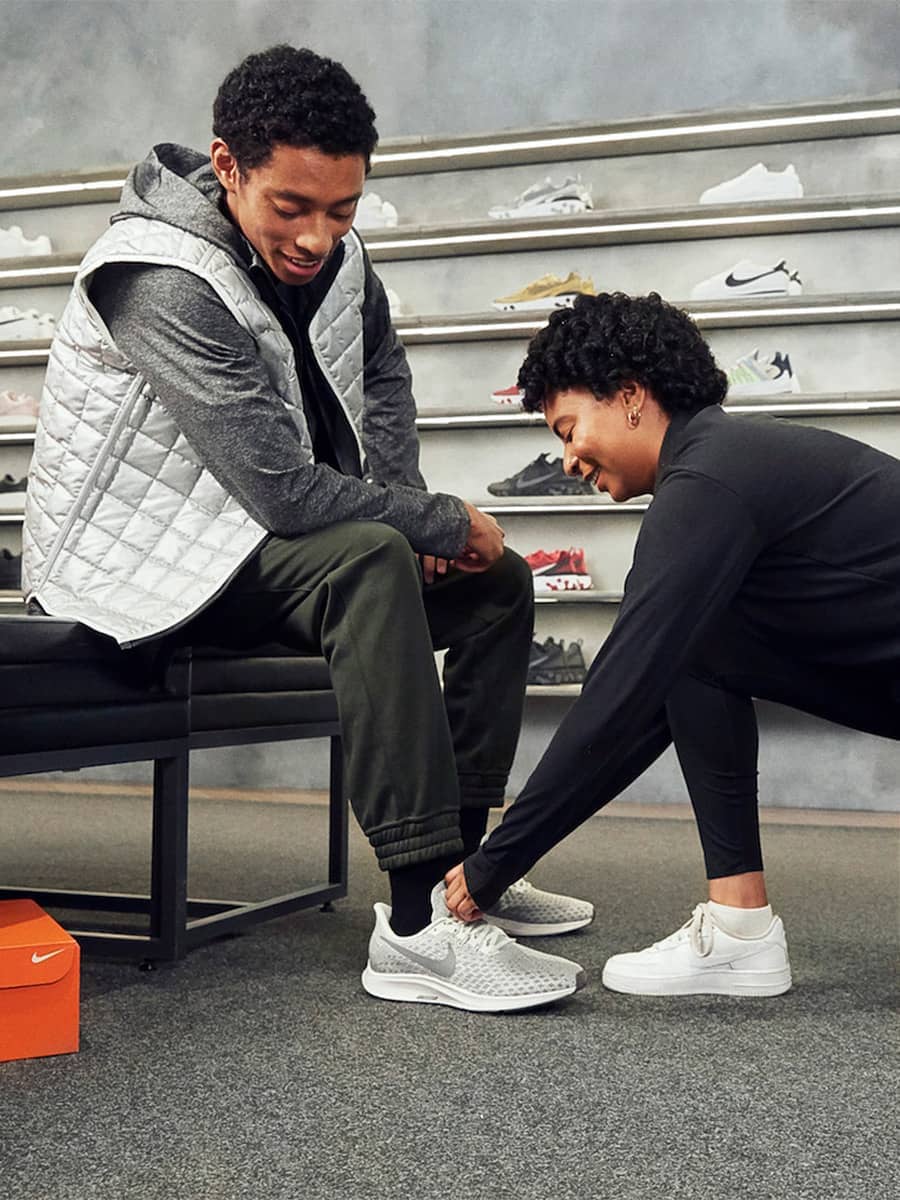Finding the perfect fit when it comes to sneakers can be a game changer. Whether you’re a sneakerhead, a casual walker, or a professional athlete, understanding how your shoes should fit is crucial for comfort, performance, and overall foot health. In this comprehensive guide, we’ll break down the various aspects of sneaker fitting, explore real-world footwear experiences, highlight popular products, and answer the most common questions surrounding sneaker fit. Let’s dive in!
The Importance of Proper Fit
Wearing sneakers that fit well can affect your daily life, whether for work, exercise, or leisure. When sneakers are too tight, they can lead to discomfort, blisters, and other foot problems. Conversely, shoes that are too loose can cause instability and may lead to injuries. Here’s why a proper fit matters:
Comfort
When your sneakers fit correctly, you experience enhanced comfort. This is particularly important during activities like running or hiking, where foot movement is crucial. A well-fitted shoe allows for natural foot movement without restriction.
Performance
For athletes or those engaging in high-impact activities, the right fit can improve performance. Shoes that fit well provide proper support and cushioning, crucial for maintaining speed and agility.

Foot Health
Wearing ill-fitting shoes can lead to various foot-related issues, including bunions, corn, and plantar fasciitis. A good fit helps mitigate these risks, supporting better foot health over time.
Understanding Foot Anatomy

Before purchasing sneakers, it’s essential to understand the anatomy of your foot. The shoe should accommodate the following parts:
Length
The length of your foot is the most obvious measurement. When trying on sneakers, there should be about a thumb’s width of space between your longest toe and the end of the shoe.

Width
Feet come in various widths, which can significantly affect fit. Sneakers come in different widths, usually categorized as narrow, standard, and wide. A proper width ensures that your foot is secure without being pinched.
Arch Height
Understanding your arch height (low, medium, or high) is critical for choosing the right sneakers. Different shoe designs cater to varying arch types, affecting overall comfort and support.

How to Measure Your Feet for Sneakers
To ensure the best possible fit, measuring your feet correctly is essential. Here’s how to do it:

Tools You’ll Need
You’ll need a ruler or measuring tape, a pen, and paper. It can also help to have someone assist you for more accurate measurements.
Step-by-Step Guide
- Stand on a piece of paper with your heel against a wall.
- Mark the longest point of your foot on the paper.
- Measure the distance from the wall to the mark using a ruler.
- Repeat for both feet, as one may be larger than the other.

Types of Shoe Fits: Understanding Your Options
Different types of fits can influence your experience with sneakers. Let’s explore the most common types:

Snug Fit
A snug fit is essential for activities such as running or playing sports. It ensures that your foot doesn’t slide around inside the shoe, reducing the risk of blisters and discomfort.
Standard Fit
The standard fit is a balance between snug and loose. It’s ideal for casual wear or everyday use, providing comfort without being too tight.

Loose Fit
A loose fit might be comfortable for some, but it can lead to lack of support during physical activities. If you prefer a looser feel, make sure there’s still enough structure to avoid injury.
Common Footwear Experiences: Real-World Insights
Real-world experiences can be beneficial when searching for the perfect fit. Here are a few anecdotes from sneaker enthusiasts:
Case Study 1: The Runner’s Dilemma
Sarah, an avid runner, struggled to find the right sneakers for her foot type. After measuring her feet, she discovered that her right foot was slightly larger than her left. She opted for a brand that offered half sizes and was able to find a perfect fit. Since then, her running performance has improved, and she experiences less pain.
Case Study 2: The Casual Walker
James, a casual walker, found that many sneakers were either too tight or too loose. After consulting with a footwear specialist, he learned about different width options and discovered that a ‘wide’ fitting shoe provided the comfort he was missing. This change made long walks more enjoyable.
Comparison Table: Popular Sneaker Brands and Their Fits
| Brand | Fit Type | Arch Support | Available Widths | Price Range |
|---|---|---|---|---|
| Nike | Snug | Medium | Standard, Wide | $70 – $300 |
| Adidas | Standard | Medium to High | Standard, Wide | $60 – $250 |
| Puma | Loose | Medium | Standard | $50 – $200 |
| New Balance | Standard | High | Standard, Wide, Extra Wide | $70 – $250 |
Tips for Ensuring the Perfect Fit
Here are some practical tips to help you find the ideal sneaker fit:
1. Try Shoes on at the End of the Day
Your feet tend to swell throughout the day. Trying shoes on in the afternoon or evening can help you find a better fit.
2. Wear the Right Socks
When trying on shoes, always wear the type of socks you intend to wear regularly. This gives you a more accurate idea of how they will fit.
3. Walk Around
Take a few laps around the store to test the sneakers. Pay attention to how they feel while walking, running, or jumping lightly.
4. Consult Size Charts
Brand sizes can vary. Always refer to the brand’s size chart for guidance when selecting your sneakers.
5. Shop for Your Specific Foot Type
Consider your foot shape and arch type when selecting a brand, as different companies provide distinct fits.
Product Highlights: Best Sneakers for Every Fit
Here are some sneaker models that are highly rated for their fit and comfort:
1. Nike Air Zoom Pegasus
Known for its snug fit and responsive cushioning, the Nike Air Zoom Pegasus is ideal for runners. It’s available in various widths, catering to different foot types.
2. Adidas Ultraboost
The Adidas Ultraboost offers a standard fit with exceptional cushioning, making it popular among casual wearers. Its primeknit upper adapts to your foot shape.
3. New Balance 990v5
This model is a favorite for those who need extra arch support and width options. It’s designed for both casual wear and running, offering a blend of style and comfort.
4. Puma RS-X
Puma’s RS-X is recognized for its loose fit and fashion-forward design. Ideal for streetwear enthusiasts, it’s comfortable for all-day wear.
FAQs: Answering Your Sneaker Fit Questions
1. How do I know if my sneakers are too tight?
If you experience discomfort, pinching, or pain in your toes, your sneakers may be too tight. A good rule of thumb is to have about a thumb’s width of space at the toe box.
2. What should I do if one foot is larger than the other?
It’s common to have one foot larger than the other. Opt for a size that fits the larger foot and consider using insoles for the smaller foot to ensure both feet are well-supported.
3. How can I tell if my sneakers have adequate arch support?
Check if your foot aligns properly with the sole of the shoe. If you feel like your foot is falling in or rolling out, you may need more arch support.
4. How often should I replace my sneakers?
Generally, it’s recommended to replace sneakers every 300 to 500 miles depending on your use. Look for signs of wear, such as flattening or loss of cushioning.
5. Can I stretch my sneakers if they’re too tight?
Yes, you can stretch certain materials with stretching sprays and techniques. However, if they are consistently uncomfortable, investing in a better-fitting pair is wiser.
6. What are the signs of an ill-fitting sneaker?
Common signs include blisters, sore spots, difficulty walking, or feeling unstable. If you experience any of these issues, it may be time to reevaluate your fit.
7. Is it important to try on sneakers before buying them?
Absolutely! Trying them on in-store gives you a better sense of their fit and feel. If buying online, ensure there’s a good return policy in case the size isn’t right.
8. Should I always buy sneakers in my usual shoe size?
Not necessarily. Different brands and styles can fit differently. Always try them on or refer to size charts before purchasing.
9. Can I use insoles for a better fit?
Yes, insoles can enhance comfort and support. They can fill in extra space and improve overall fit, especially for those with specific foot needs.
10. What sneaker brands are best for wide feet?
Brands like New Balance, Brooks, and Asics are known for their wide-fit options, accommodating various foot shapes. Always check their size charts for specifics.
Conclusion: Finding Your Perfect Fit
In summary, understanding how sneakers should fit is paramount for comfort, performance, and health. By measuring your feet, trying on various fits, and consulting with brand size charts, you can find the perfect pair that caters to your specific foot type. Whether you’re running, walking, or just strolling through life, the right sneakers can make all the difference!
Remember, investing time in finding the right fit today can lead to a more enjoyable and pain-free experience down the road. Happy sneaker hunting!